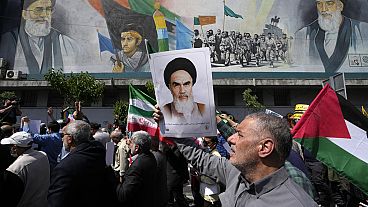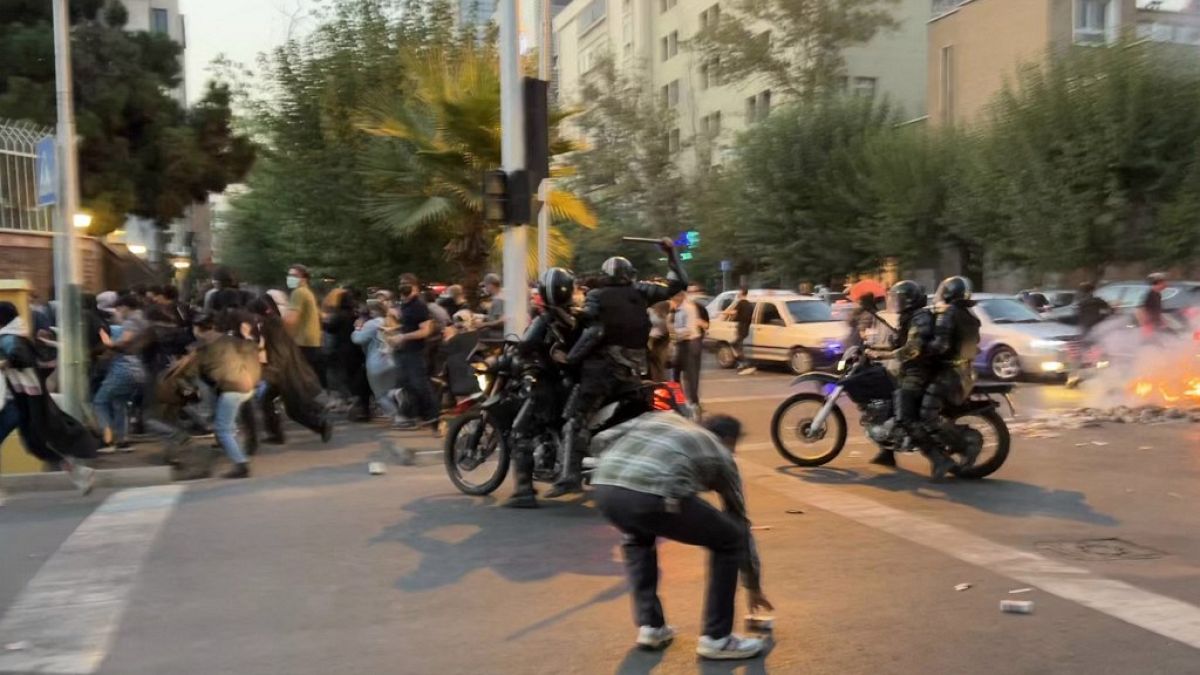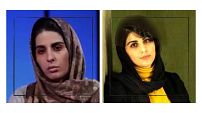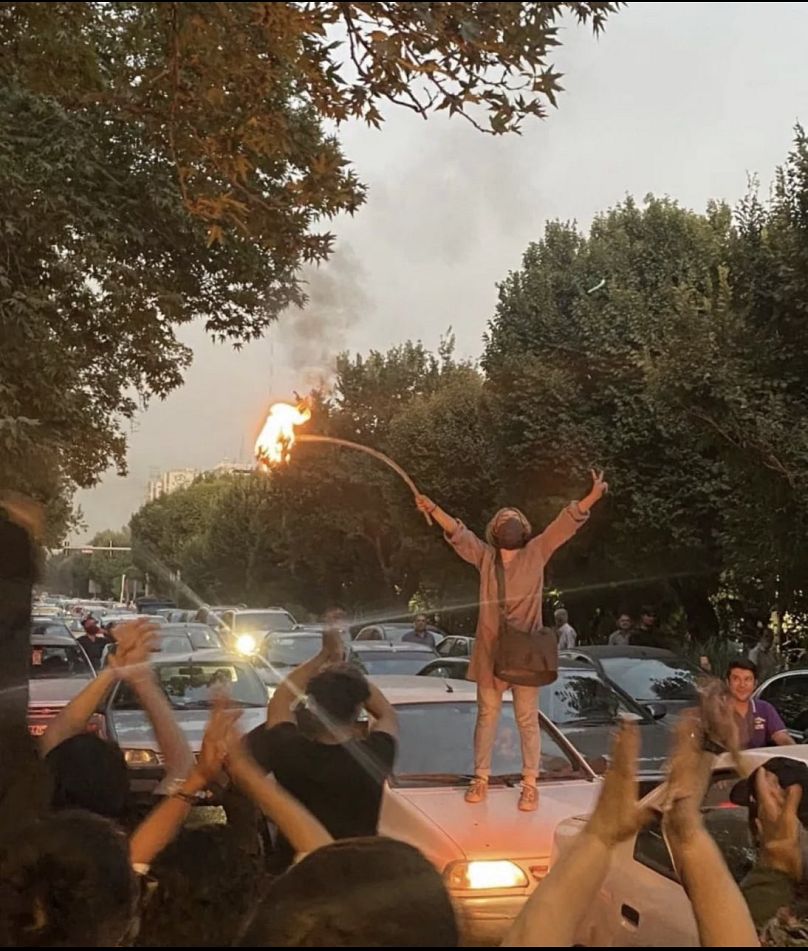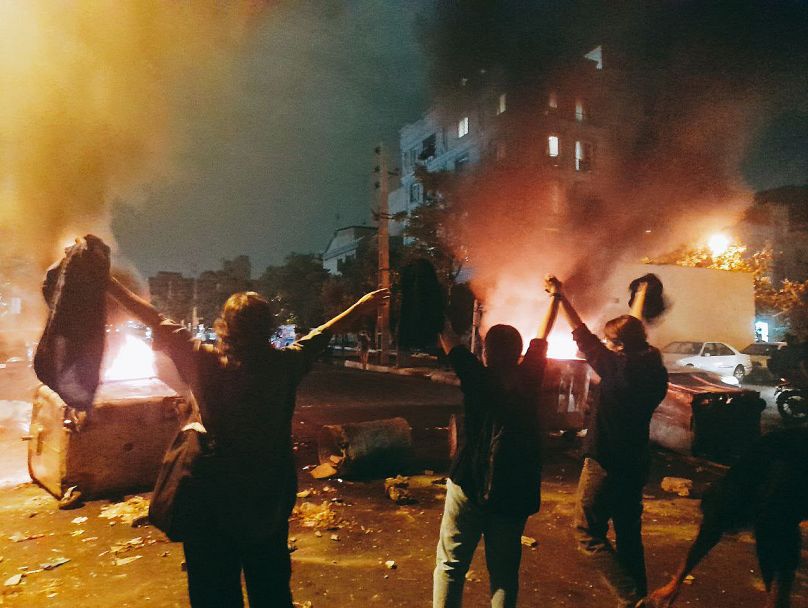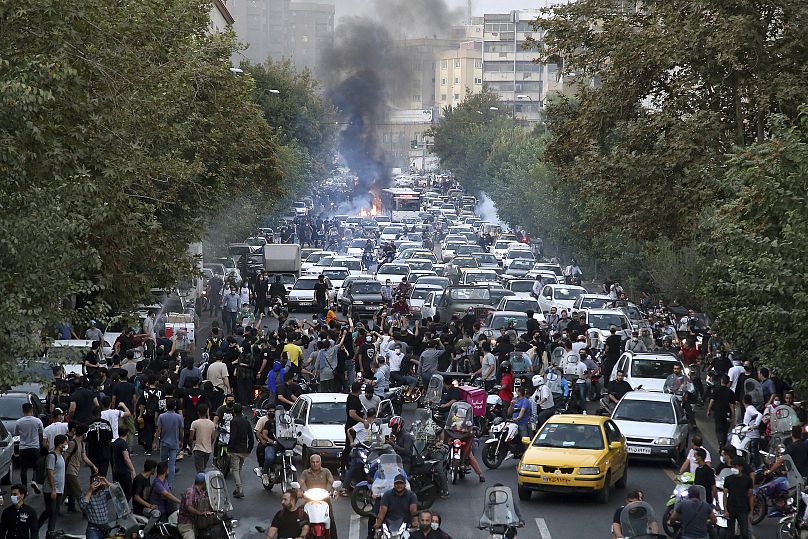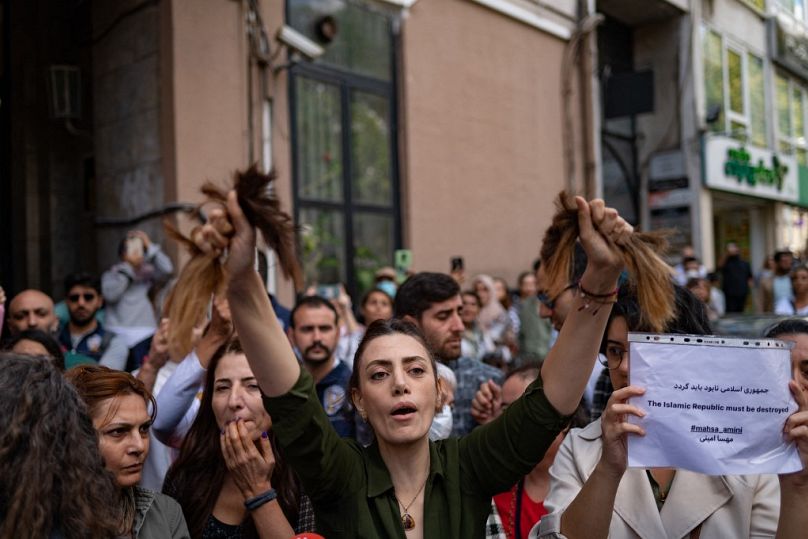After many days of demonstrations in Iran, Euronews has a look at what is happening and why the protests are different this time.
As demonstrations in Iran continue following the death of a young girl in custody, Euronews looks at why this is such a momentous time in Iran.
What sparked the demonstrations?
The unprecedented protests in Iran were sparked by the death of Mahsa Amini, a 22 year old woman from Kurdistan. She was arrested by the moral police in Tehran because the authorities said she was not wearing her hijab correctly. She was taken to a detention center where she collapsed and died. The reason for her death is still unclear. Iranian President Ebrahim Raisi promised a 'transparent investigation' last week. He said on Wednesday that Amini's death had "saddened us all", but he added that his government would not allow "chaos" or for people to "disturb the peace of society through riots".
"This summer the moral police in Iran have got more violent, they detain people from crowds for not wearing the hijab properly," Maryam Toosi from Euronews Persian said. "This made women angrier with them and the rules".
Toosi gives the example of Sepideh Rashno, a 28 year-old artist and writer who was confronted by a fanatic young woman on the bus for not wearing her headscarf this summer. Other women on the bus backed her, and forced her confronter her to leave the bus. A video of the incident went viral. Rashno was arrested and forced to make a statement against her will on state TV while seeming beaten.
What is the hijab and why is it so important?
Iran is the only country in the world where where women have to wear the hijab - a headscarf which covers their hair (a measure taken following the 1979 Islamic Revolution).
In Iran there is a whole new generation of young people, especially women, who are not afraid to question which part of traditions should be upheld. The protesters are using the slogan 'Women! Life! Freedom" - an expression used by female Kurdish fighters against the self proclaimed Islamic State terrorist group.
Celebrities and artists have also come out in support of the protests.
Why are these protests unprecedented?
One of the reasons is the size. There are protests in more than 100 cities in Iran and more and more outside the country.
As well as women's rights, there is also the issue of poverty and decades of discontentment with how society is run.
An important factor is that young people seem to be bolder than protesters before them. They were born after the revolution and refuse to have a future without freedom and are prepared to risk everything for their beliefs.
"In 2009 I went to the protest after the presidential elections that people thought were rigged. The goal of the protests was different, people only wanted the real result," Maryam Toosi said. "The activists and people on the streets today started it for more women's rights, against the hijab, and now they don't want the whole regime anymore, chanting no dictator".
"If you asked me 12 days ago, I would have told you that I have no hope for the country, the art, the literature, everything is dead, people are tired, they seem they have lost their hope too.
"I have hope again since the second, third night of the protests, because of what it means, what they stand for, women's rights. I would never have believed to hear such a protest, and not only women, men are shouting it too, this give me hope.
"The young activists, these brave young people were raised by my generation. We had some personal experience of what we thought was freedom for a short period of time, but we mainly lived under pressure. They are not like us. They do not set any limits for themselves to express their wishes. Their demands are part of the basic rights of every human being.
How have the authorities reacted?
There have never been such long protests without a brutal response. The authorities are trying to downplay the protests with their usual strategy: shutting down the internet where protests are held to make it difficult for demonstrators to organise themselves. Shutting down Instagram and WhatsApp, the only social media channels allowed in the country.
They are also spreading disinformation and accusations about the protesters. Iranian authorities claim they are puppets of Israel or Saudi-Arabia.
There is a lot of speculation about Iran's Supreme Leader's health. Ayatollah Ali Khamenei had to cancel meetings on doctors' advice earlier this month and people are not convinced that he is 100 % healthy. This has lead to speculation about who might replace him and what that might mean for the growing protests.
Why are protesters cutting their hair?
It is a way to express their anger and sadness together, to show that they are mourning. There are traces of this tradition in classic Persian literature especially in the poems of Ferdowsi and Hafez.
"Gisoboran" (cutting hair), is one of the most famous mourning rituals in Iranian culture, which is also mixed with protest and unhappiness.
In ancient Iranian mythology, women's hair was an symbol of fertility and blessing, and this is why women's hair was and still is important.
